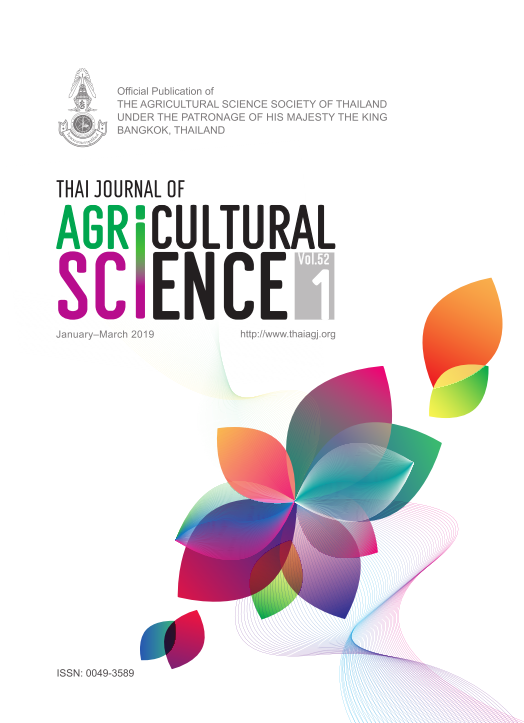Effect of Stocking Rate of Thai-Esaan Native Beef Cattle under Alternate Grazing Methods on Growth Performance and Botanical Changes in Grass-Legume Mixture Pastureland
Main Article Content
Abstract
This experiment was carried out at the University Farm, Department of Animal Science, Faculty of Agriculture, Khon Kaen University, Khon Kaen, Thailand during April 2011 to September 2012. The work aimed to study effect of stocking rate of Thai-Esaan native beef cattle carried out under “cut and carry” and alternate grazing methods with respect to beef cattle growth performance and the changes in botanical composition of grass-legume mixture regime of the pastureland. Korat soil series (Oxic paleustults) was used. The experiment was laid in a Completely Randomized Design (CRD) with 3 replications and each replication had 2 heads of Thai-Esaan native beef cattle. The experiment consisted of 4 treatments, i.e. T1 (control, “cut and carry” method) had 0.25 rai/head, T2 had a grazing area of pastureland of 0.25 rai/head, T3 had a grazing area of pastureland of 0.50 rai/head and T4 had a grazing area of pastureland of 0.75 rai/head (1 hectare = 6.25 rai). The results showed that Korat soil series (Oxic Paleustults) is a poor fertility soil with an average pH value of 5.5 and most of the available soil nutrients (NPK) were relatively low. Total dry weights of grass plus legume before grazing were highest for T4 than the rest. This result was also found at the end of the experimental grazing period. Crude protein yields were highest with T3 followed by T4, T2 and least with T1 with mean values of 1,789, 1,740, 1,370 and 951 kg/ha, respectively. Feed intake values were highest with T4 followed by T3, T2 and least with T1 with the mean values of 5.65, 4.95, 3.85 and 3.43 kg/head/day, respectively. The difference was large and highly significant (P < 0.01). Average daily live weight gained was higher for T3 and T4 than T2 and T1 with values of 414, 456, 257 and 190 g/day, respectively. The percentages of total fat in rumen were higher for T3 and T4 than T2 and T1 with values of 0.06, 0.05, 0.02 and 0.02, respectively. The difference was large and statistically significant (P < 0.05). Conjugated linoleic acid values of total fat were highest with T4 followed by T3, T2 and T1 with the values of 1.50, 1.12, 0.17 and 0.11%, respectively. The difference was large and statistically significant. Alternate grazing methods significantly affected dry matter yields, botanical composition changes of the pastureland, and the beef cattle performance and also conjugated linoleic acid in the rumen of the beef cattle. Optimum stocking rate of 0.5 rai/head of T3 was the best recommended treatment for Korat soil series (Oxic Paleustults).


